Nikon Coolpix S5 Review
Nikon Coolpix S5
Can the new Coolpix S5 live up to the legendary Nikon name?
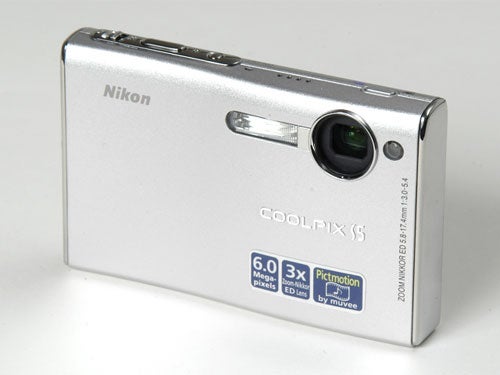
Verdict
Key Specifications
- Review Price: £258.00
It’s a funny thing, but last week I ran out of my allotted 1,000 words trying to describe all the features and options of the Olympus E-500 DSLR. This week I’ve got a camera that’s so simple I’m going to be hard pushed to find 1,000 words to describe it.

Launched in February this year, the Coolpix S5 is one of two new cameras in Nikon’s S range of ultra-slim pocket compacts. The S series itself is relatively recent, starting with the 5.0 megapixel S1 launched around this time last year. All the cameras in the series share the same basic layout, with a 3x optical zoom non-protruding lens mounted in the top right corner of the front panel, and only a bare minimum of external controls. The S5 has a 6.0 megapixelssensor, a high resolution 2.5in LCD monitor, and a strong metal body. It measures 93 x 59 x 20mm and weighs 165g including battery and card – it may be neither the slimmest nor the lightest camera on the market, but it is small and light enough to slip into a shirt pocket or purse without leaving much of a bulge.
Like all Nikon compacts the build quality is exemplary. The finish is protected by a scratch-resistant lacquer, and the LCD also has a scratch-resistant acrylic outer layer, so the camera should survive an accidental in-pocket encounter with you car keys without too much damage. For its size the S5 feels surprisingly substantial, and it has a feeling of real quality about it. As well it might, because with a list price of £299.99 and a street price of around £235 it is well above the average for a camera in this class. With cameras such as the smaller and lighter Casio EX-Z60, Sony DSC-W50 or Pentax Optio S6 available for under £200 the Coolpix S5 needs to be something special if it’s going to compete. The Nikon brand name alone, unimpeachably reputable though it may be, simply isn’t enough these days.
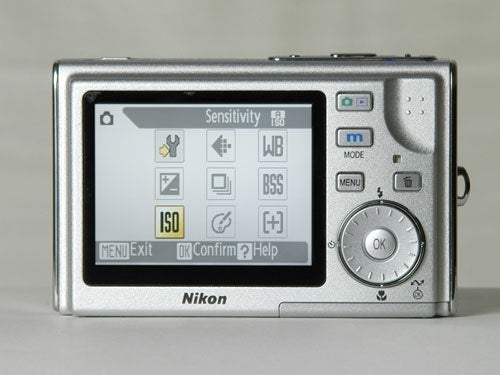
What it does offer is simplicity of operation that will appeal to most first-time users, which is slightly ironic since the S5 contains more advanced technology than most other cameras. I’ll come to the clever stuff in a bit, but first let’s look at the handling and performance.
The main controls on the S5 are very basic, and it has to be said that some of them are rather fiddly. The main power switch is a tiny button on the top panel measuring less than 3mm wide and slightly recessed. I personally found this a bit hard to operate, so anyone with less-than-perfect muscle control is going to have a very hard time with it. The shutter button is also very small and hard to find by touch alone, while the zoom control is so tiny it’s ridiculous. I can understand designers wanting to make small, highly portable cameras, but there comes a point at which the camera becomes so small that it is awkward for anyone with normal-sized hands to operate. The top panel controls on the S5 may have gone past this point by several miles.
Another handling problem is the highly reflective finish of the LCD screen. Surely designers must have realised by now that this makes it impossible to see in bright sunlight? Come on Nikon, try to keep up.
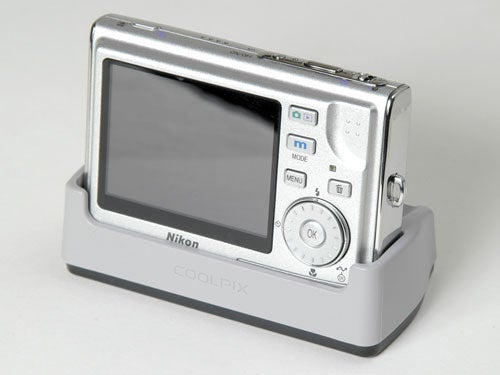
The zoom control has other problems apart from its size. No matter how delicately I operated it, I couldn’t get the zoom lens to go from its widest to its longest settings in any more than six large and jerky steps. It is also impossible to switch off the digital zoom, so minus several million brownie points for that little oversight.
The D-pad almost makes up for it though. Like the Canon Powershot S60, the Coolpix S5 features a D-pad that can also rotate. This is used for the rotary Mode menu, and also allows very fast scrolling through your pictures, as fast as 10 frames a second. Of course it also operates as a normal four-way controller for menu navigation, including secondary functions for flash mode, macro mode and self-timer.
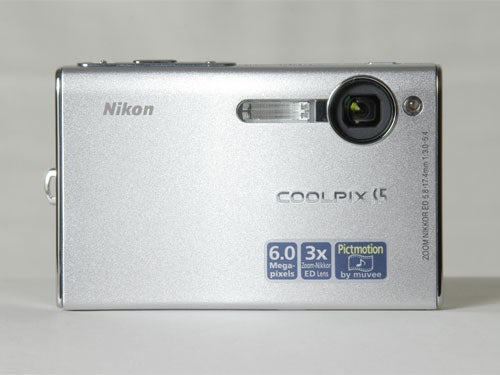
As I’ve reported before, I have a personal dislike for the style of camera that has the lens right in the top corner like the S5. They’re fine for one-handed operation, but if you try to use the camera two-handed, for instance to stabilize it when shooting in low light, it’s very easy to get the fingers of your left hand in front of the lens. It’s not a major problem I know, but I still find it annoying. However one advantage with this type of non-extending lens is much faster start-up times, in this case around 1.5 seconds, which is very fast by any standard.
Shot-to-shot times are also very good. In continuous shooting mode it can manage five shots in 3.5 seconds, although there is then a five-second wait while the files are transferred to the memory card. The S5 also has a decent movie mode, with the now-obligatory 640 x 480 pixel resolution at 30 frames per second.
So, how about all that technical cleverness I mentioned? The S5 has several advanced features supposedly designed to produce better pictures automatically. The smartest of these is the Face-priority AF system, which is activated by a small button on the left of the top panel. This activates software which can actually recognise the shape of a human face in the frame and automatically focus on it. I found that it worked fairly well in good light as long as the person was looking directly at the camera. However in lower light it was less reliable, and also seemed to be confused by strong backlighting or movement.
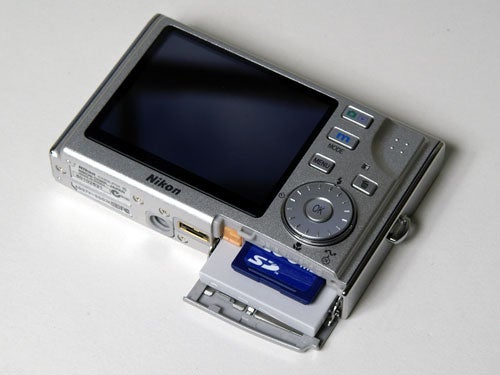
Arguably more useful is the D-lighting system, which is supposed to improve under-exposed shots by brightening darker areas, while leaving lighter areas alone. Unfortunately in most cases this results in a lot of image noise in the affected areas, since the camera is effectively increasing the ISO in those areas. However in some circumstances it can certainly improve a shot.
Also included is built-in red-eye removal. In theory this detects the red-eye effect caused by the built-in flash, and automatically removes it. Again I found that it was only partially effective, and only under close to ideal circumstances. One thing that does work is the blur warning. It detects if the picture you just shot suffers from motion blur and asks if you want to keep it.
With all this sophistication I was hoping for great things in the image quality department, but again I found several problems that I would not have expected to see in a £300 camera, especially one with the illustrious Nikon badge. While focusing and exposure were virtually perfect under almost all circumstances, and colour rendition was as good as ever, I also found that images were noticeably over-sharpened, producing lines around some high-contrast edges.
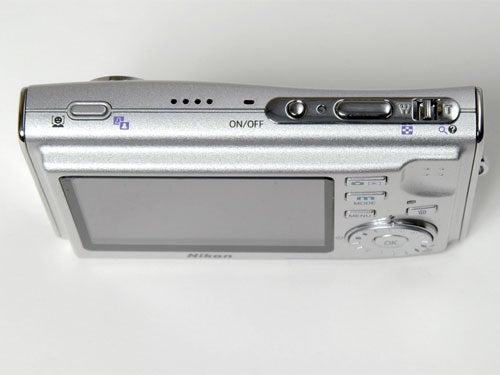
Noise control was generally very good, producing very clean results at 50 ISO, but there was some colour distortion in darker areas visible from 100 ISO upwards.
The worst offender though was the lens, which is usually a Nikon strongpoint. This time I found badly blurred corners at both ends of the zoom range, as well as severe barrel distortion at the wide-angle setting, something I’d associate with cheap cameras at the other end of the price range. See the attached sample images to see what I’m on about here.
”’Verdict”’
All in all a rather lackluster performance from what should have been a very impressive camera. Considering the price and Nikon’s enviable reputation, the S5 is something of a disappointment, with fiddly controls, several handling issues and indifferent picture quality. The boasted built-in high technology doesn’t seem to make as much difference as one might hope, and certainly isn’t worth the extra money.
(table:features)
A range of test shots are shown over the next few pages. Here, the full size image has been reduced for bandwidth purposes, and a crop taken from the original full resolution image has been placed below it in order for you to gain an appreciation of the overall quality. The following pages consist of resized images so that you can evaluate the overall exposure. For those with a dial-up connection, please be patient while the pages download.
—-
Note: These ISO test shots were taken indoors using diffused natural daylight and automatic white balance. Can you spot the deliberate mistake in this chess puzzle?
—-

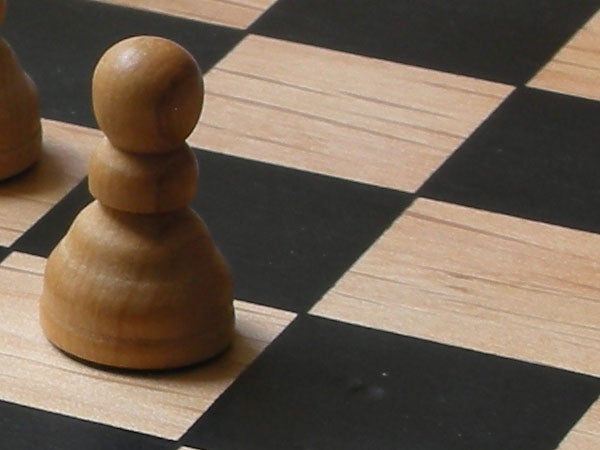
1/5th sec, F4.4, 50 ISO.
At the minimum sensitivity setting of 50 ISO the image is nice and smooth, but the rather hard sharpening detract from the overall quality.
—-
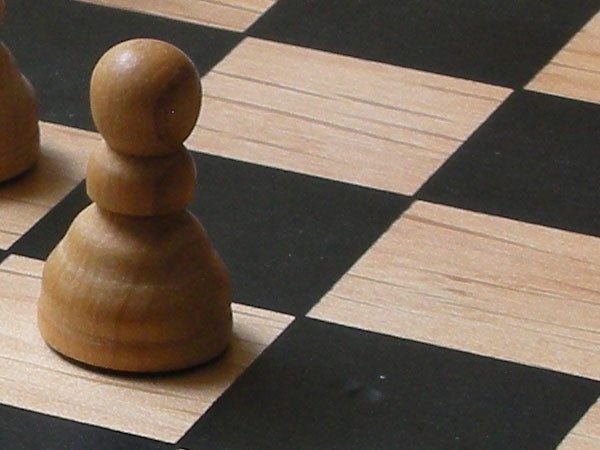
At 100 ISO the slightly raised contrast actually shows up a little more detail than the previous shot, but there is some slight colour distortion in the darker areas.
—-
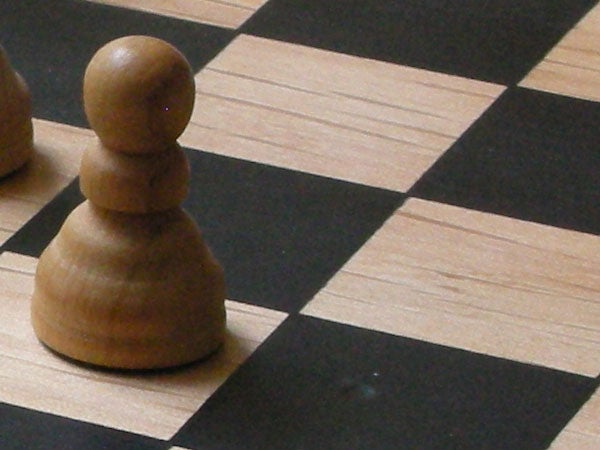
Some slight noise is creeping in at 200 ISO, and the colour distortion is a little worse than before, but on the whole the picture isn’t too bad.
—-
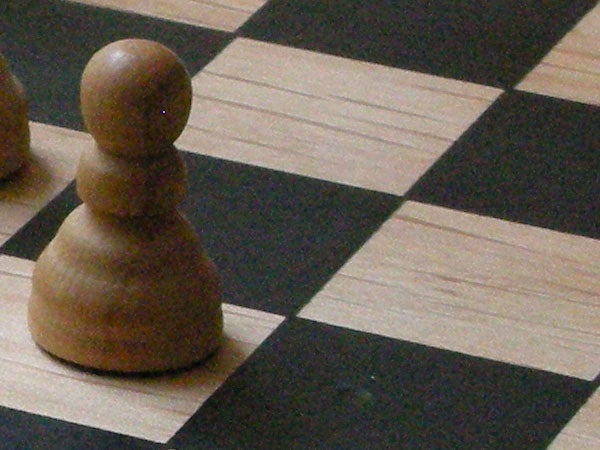
At the maximum 400 ISO the image now has a lot of noise, and the darker areas are speckled with red and green patches, but overall image quality is still quite usable.
—-
This page consists of resized images so that you can evaluate the overall exposure.
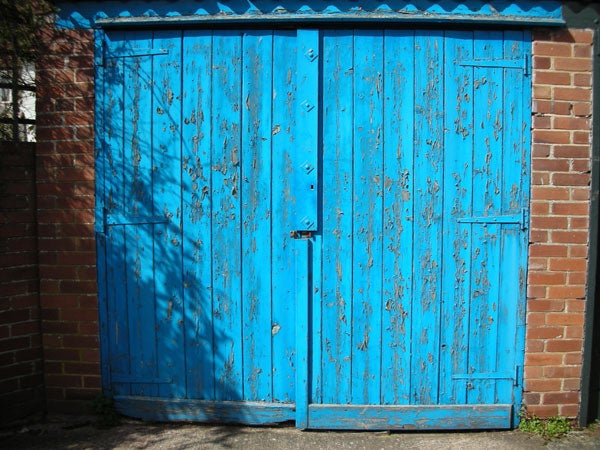
While the exposure and colour reproduction are unquestionably superb, this shot looks like it was taken through the bottom of a milk bottle. The corners are badly blurred, and the barrel distortion makes this garage door look like a Hobbit hole.
—-

The level of detail in the 6MP image is very good, and combined with the excellent colour reproduction it has captured every detail of this rusty old hinge.
—-
This page consists of resized images so that you can evaluate the overall exposure.

The built-in flash has a listed range of 2.6m at the wide end, which looks to be about right from this shot. However as you can see the automatic red-eye reduction has not been particularly successful.
—-
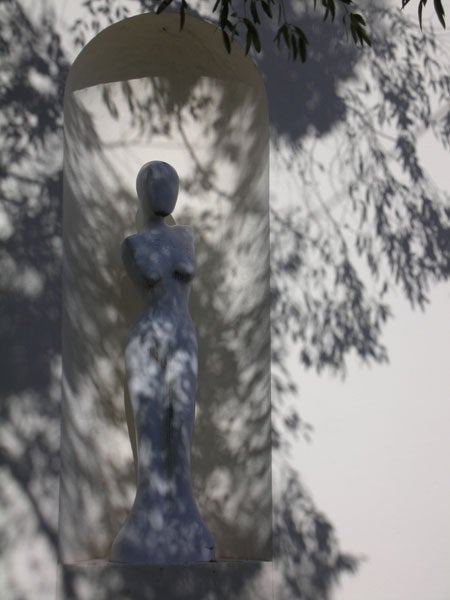
I’ve know some cameras to have a real problem with this statue, either being unable to focus on it, or over-exposing the shot. No such trouble for the Nikon though.
—-
This page consists of resized images so that you can evaluate the overall exposure.
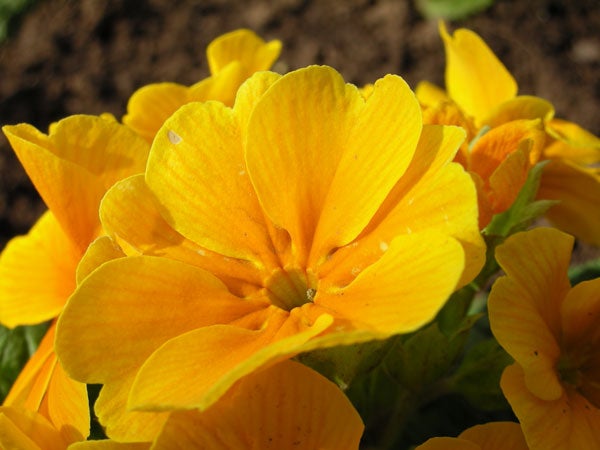
It’s spring at last, so you can expect lots of macro shots of flowers for the next few months. Again, plenty of detail at the closest macro range of approximately 4cm.
—-
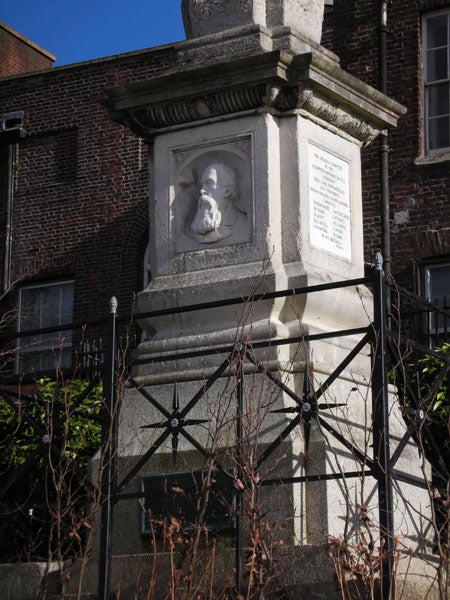
The 3x optical zoom has a maximum telephoto length equivalent to 105mm, which is pretty standard for a lens of this type.
—-
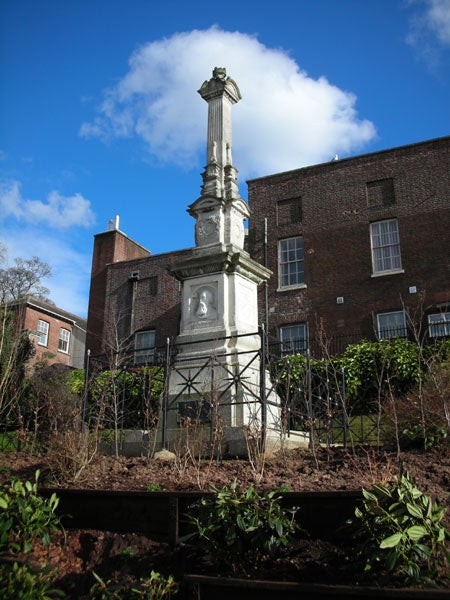
Taken from the same position as the shot above, this one shows the wide angle end of the zoom range, equivalent to 35mm on a film camera.
—-
Trusted Score
Score in detail
-
Value 5
-
Image Quality 7
Features
| Camera type | Ultra Compact |
| Megapixels (Megapixel) | 6 Megapixel |
| Optical Zoom (Times) | 3x |

